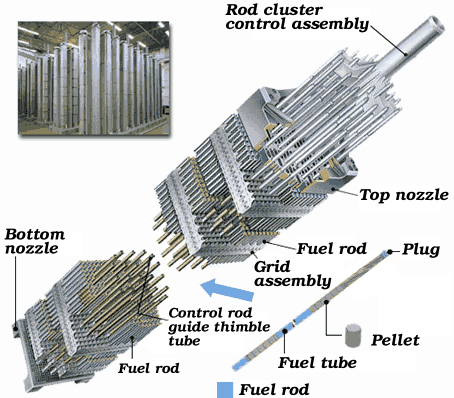Fact 3: Nuclear power plants produce very small volumes of spent fuel. The spent fuel is actually partially used and contains significant amounts of usable energy and a small amount of radioactive waste.
Spent fuel is only waste if it is not recycled or processed after removal from a reactor. Used or spent fuel is actually fissile fuel that contains important energy and industrial materials, as well as non-usable residues. Used reactor fuel is still very valuable; it has about 95% of its initial energy that can be reprocessed or recycled to generate more electricity in the future. For this very reason, it makes sense to utilize used fuel in a manner that will benefit the nation and protect public health and safety. Exercising available options for intermediate term storage, utilizing the used fuel and permanently storing the radioactive residues are prudent to the nation's energy future and environmental stewardship.

(New ceramic pellets during manufacturing of new fuel rod)
The used fuel is contained in small ceramic pellets, inside a sealed metallic tube. The metallic tubes or rods containing the fuel pellets are then combined with other tubes to create the fuel assembly.

For every reactor, the used fuel is concentrated in a small volume of very high density material. All the used nuclear fuel produced by the U.S. nuclear energy industry in nearly 50 years-if stacked end to end-would cover an area the size of a football field to a depth of less than 10 yards (Source: Nuclear Energy Institute). For a two unit nuclear power station, the spent fuel generated from 60 years of operations, would be safely stored in dry casks on a 1 ½ acre land area, on or off the plant site.
Used nuclear fuel is initially stored in wet storage (spent fuel pools) within the reactor building and later in dry cask storage on nuclear plant sites. After 60 to 80 years of operation, the spent fuel would be transported to be reprocessed or stored at an off-site repository facility. The transportation safety record of the industry is excellent. Past shipments of spent fuel in secured casks have covered 1.7 million miles with no injuries, fatalities or environmental damage.
|
